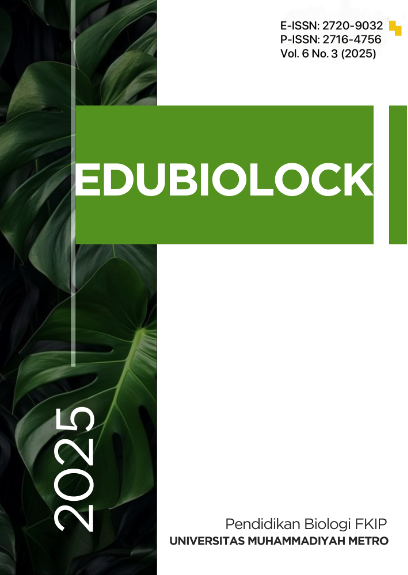PERBANDINGAN DOSIS VERMIWASH TERHADAP PERTUMBUHAN DAN PRODUKSI KEDELAI EDAMAME (Glycine max (L.) Merrill) SEBAGAI SUMBER BELAJAR BIOLOGI BERUPA LKPD
Abstract
This study aimed to (1) examine the differences in growth and yield of edamame soybeans (Glycine max (L.) Merrill) under varying vermiwash dosages, (2) identify the dosage that produces the best growth and yield, and (3) evaluate the feasibility of developing a Student Worksheet (LKPD) as a biology learning resource. The research employed an experimental method using a Randomized Block Design (RBD) with four treatments: P1 (100 mL vermiwash), P2 (300 mL), P3 (500 mL), and P4 (700 mL), each replicated five times. Observed parameters included plant height (cm), number of leaves, and fresh weight of edamame soybeans (g). Based on the analysis test, the result Fhit>Fdaf indicates that the application of different vermiwash doses in each treatment gives different results on the growth and production of edamame soybeans. The BNJ follow-up test and Dunn's Post Hoc test show that the best growth and production of edamame soybeans is in treatment 4 (700 mL of vermiwash). The results of this study can be used as a biology learning resource on conventional biotechnology material for high school/Islamic high school Grade X in the form of a Student Worksheet, with data obtained from expert validation, showing an average material validation score of 88.57% and a design validation score of 90%.






